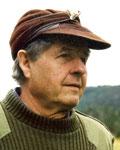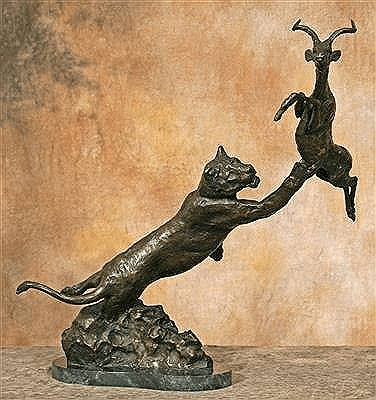1938 – 2020
Kenneth Bunn’s sculptures of animals and human figures are easily recognizable because of their strong interpretative style, which results in a sense of life and movement without unnecessary detail. “I create the illusion of life,” says Bunn. He combines design and mass into three-dimensional portrayals that have a fine sense of anticipated action. The center of interest may not lie in what the animals are doing, but in where their interest is directed. Viewers are caught up in that sense of anticipation and become part of the setting. Bunn works with light, shadow, and texture, incorporating few protrusions, openings, or fine lines to detract from the spirit of the animal, and leaving only the suggestion of anatomical detail with unerring accuracy.
Although a certain level of animal anatomy knowledge may be gleaned from textbooks, mastery of animals’ gestures, inquisitive looks, and other specific behaviors demands field studies. In addition to traveling to Africa, Europe, Mexico, and numerous areas of North America, Bunn visits zoos and private animal preserves, which give him opportunities to enhance his work.
Noteworthy museum representation includes the National Cowboy and Western Heritage Museum, Oklahoma City; the National Museum of Wildlife Art, Jackson, Wyoming; the Eiteljorg Museum of American Indians and Western Art, Indianapolis, Indiana; the Leigh Yawkey Woodson Art Museum, Wausau, Wisconsin; the Columbus Museum of Art, Ohio; the Wildlife Experience, Parker, Colorado; the Leanin’ Tree Museum of Western Art, Boulder, Colorado; and the Denver Art Museum.
Bunn was a member of the Rungius Society, an Academician of the National Academy of Design, and a Fellow of the National Sculpture Society,


